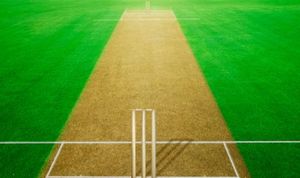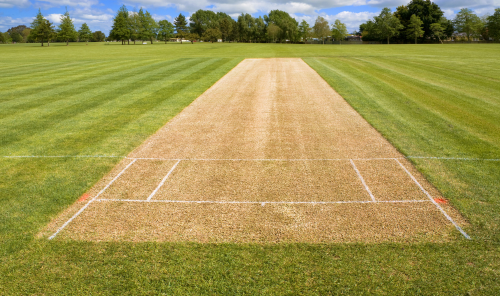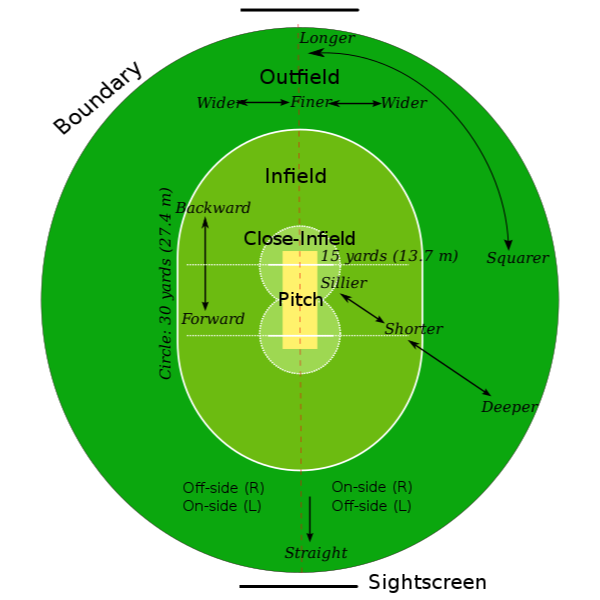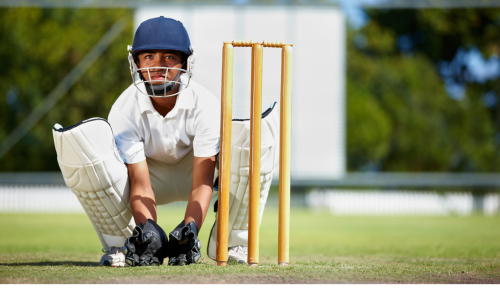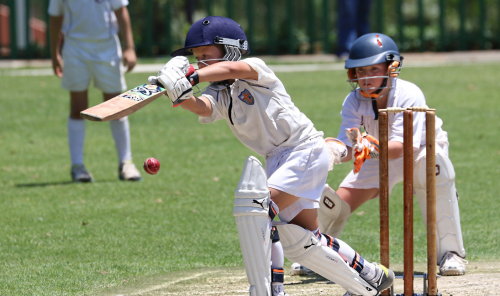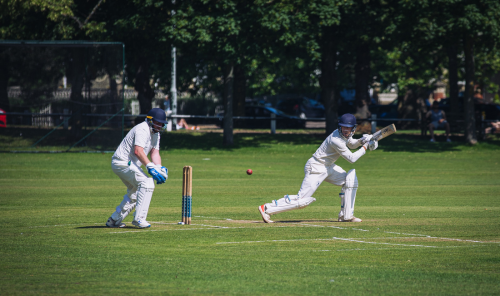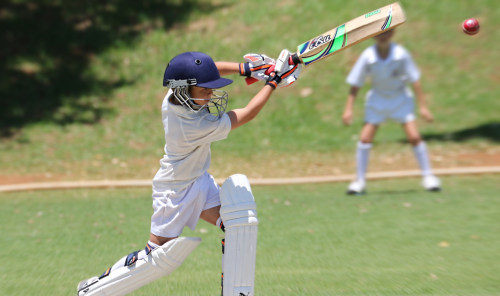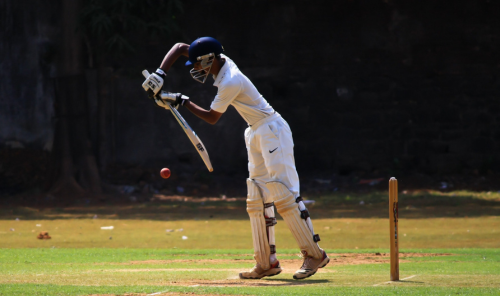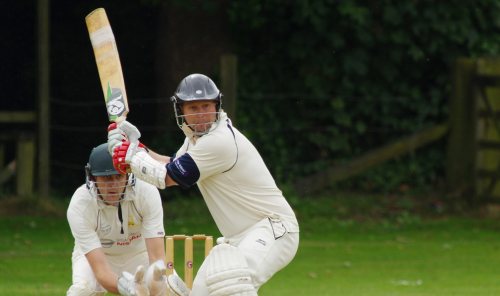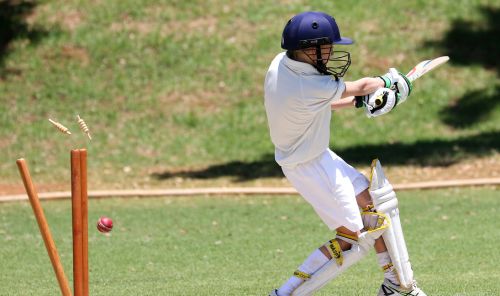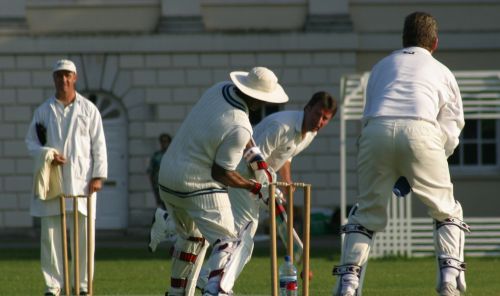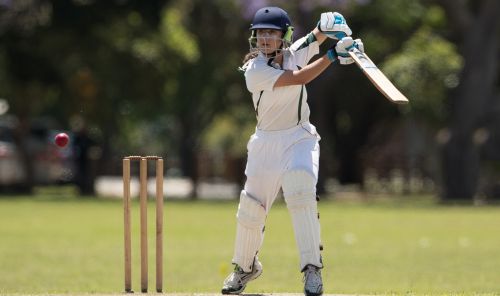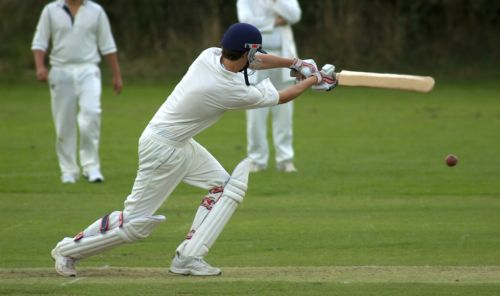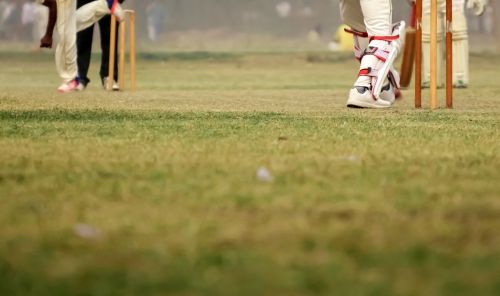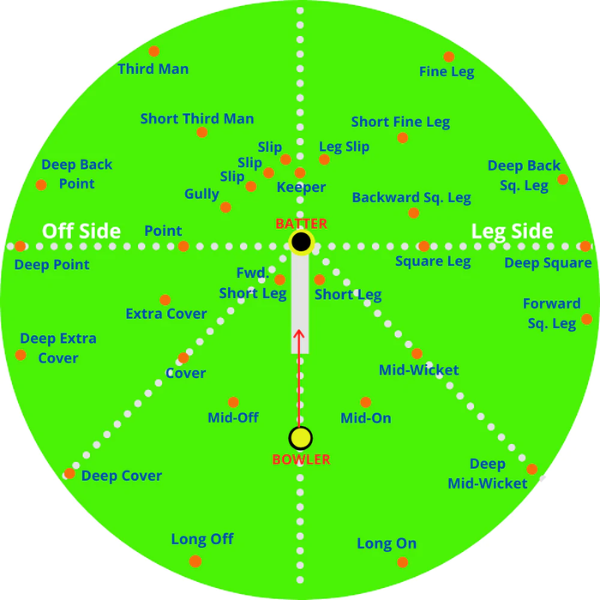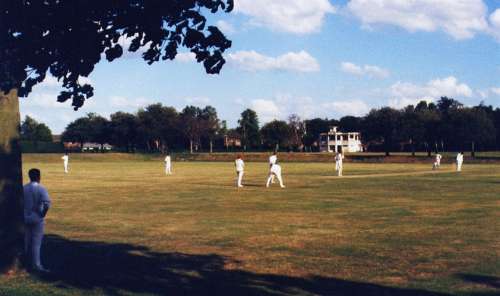A Beginner’s Guide to Cricket Fielding Positions
Cricket fielding positions are the strategic cornerstone of cricket that can often dictate the course of a match. Did you know there are a total of 35 fielding positions that can be used in the sport?
With so many positions, it can get confusing pretty quickly for a newbie. So, what are all these fielding positions, and why are they so important? Well, we’ve got the answers for you.
Our guide aims to enlighten you about these placements, providing insights and tips to help you understand the art of fielding, an aspect that turns good cricket teams into great ones.
Whether you are a novice player or a brand-new fan, let's dive into the intriguing world of cricket fielding positions.
The Complete List Of Fielding Positions
If you want a quick overview (and to make things simple), we've put all the cricketing positions into a handy table:
| Pitch Area | Position Names | ||
|---|---|---|---|
| Close Infield |
|
||
| Inner Ring |
|
||
| Outfield |
|
Working Out the Cricket Fielding Positions
The names of cricket fielding positions can be confusing at first, but once you understand the basics of cricket and how fielders are positioned on the pitch, it all starts to make sense.
The key is to remember that each name corresponds to a specific area on the field in relation to the batsman.
One word refers to the fielder's position in relation to the batsman. These words include:
- Leg
- Cover
- Mid-Wicket
- Point
The position of the fielder is usually preceded by an adjective that describes the distance from the batsman:
- Silly (very close)
- Short (quite close)
- Mid (Midway between the boundary and batsman)
- Long (close to the boundary)
- Deep (close to the boundary)
Their angle can further describe the position and distance of the fielder to the batsman. These terms include:
- Square (in line with the crease)
- Backward (behind the square and batsman)
- Forward (in front of the square and batsman)
- Wide (far from an imaginary line bisecting the stumps)
- Fine (close to an imaginary line bisecting the stumps)
Cricket Field Layout Basics
Cricket pitches are enormous, which means there are plenty of fielding positions that need to be covered. The easiest way to look at fielding positions in cricket is to break the pitch down into 3 main sections.
The Close Catching Infield
This area is where you'll find the fielders who are closest to the batsman. They'll be about 15 yards away or even closer! These positions are usually for specialist catchers, so they're less focused on saving runs. Take a look at any diagram of a cricket field, and you'll see that the smallest circle in the centre represents the close-catching infield.
The Inner Ring
This area is where the fielders shine. They're always ready to stop the batsmen from scoring singles. Fielders in this zone are usually positioned within 30 yards of the batsman. The second smallest circle on cricket pitch diagrams represents the inner ring.
The Outfield
This zone includes all the other areas surrounding the wicket. Fielders positioned here have the main goal of preventing the batsman from hitting boundaries. The outfield is the largest circle on the diagram.
Close In Field
Image Credit: Wikipedia
There are plenty of cricket fielding positions in this part of the pitch. They're called close-in fielders because they'll be positioned the closest to the batsman. The most common positions include:
Wicketkeeper
Regarded as a pivotal position in cricket, thewicketkeeper stands behind the stumps on the striker's end. They're the only fielder allowed to wear gloves and external leg guards. The wicketkeeper's primary responsibilities include catching the ball when the batsman misses a shot and stumping the batsman out when they stray too far from the popping crease.
The Slips
This is where you'll find some of the best catchers on a cricket team. Slip fielders stand behind the wicketkeeper, usually in a diagonal line towards the first slip, then the second slip and so on.
Gully
The gully fielding position is an extension of the line created by the slips. Situated on the off side of the field, the gully fielder stands at an angle to the wicketkeeper, typically a bit farther away from the batsman.
There are a few scenarios when the gully position is commonly used:
- At the beginning of a match, when the ball is swinging around
- After a wicket has been won and a new batsman takes the crease
- When playing with a ‘slow pitch’ bowler
- When the captain has a hunch
- If a batsman has a history of being caught in the gully region
Leg Slip
The Leg Slip position is situated on the leg side of the batsman, right behind them and parallel to the line of the wickets. This position is directly opposite to that of the standard slips on the offside. You'll usually find a fielder in the Leg Slip position when the bowling attack is largely focusing on leg spin or when the batsman has a tendency to glance balls off their pads into this region.
Leg Gully
The Leg Gully position is also located on the leg side of the batsman, slightly closer to the batsman's square leg. Essentially, it's like the gully position but on the leg side. The fielder in this position is typically kept to catch balls that the batsman flicks off his pads.
Silly Point & Silly Mid-Off
The Silly Point position is perilously close to the batsman, located on the offside, just a few yards away from the bat. It's called 'Silly Point' because of the apparent 'foolishness' of the fielder to stand so close to the batsman.
The Silly Mid-Off is another perilously close fielding position. Situated on the off side of the batsman, this fielder stands just a few yards away from him, closer to the offside than the Silly Point.
Short Leg
Short Leg is another close-in fielding position. Positioned on the leg side, this fielder stands only a few yards away from the batsman, behind the square on the leg side. The primary role of the Short Leg fielder is to catch the ball when the batsman misses a shot or deflects the ball using the pad.
Silly Mid-On
The Silly Mid-On position is another close-in fielding position, mirroring the Silly Mid-Off on the leg side of the batsman. This fielder stands just a few yards away from the batsman, closer to the leg side. The primary goal of the Silly Mid-On is to catch the ball off a miscued shot or instigate a run-out.
The Inner Ring
The inner ring is made up of fielders who are positioned further away from the batsman than the in-field team. This is where some of the best fielding happens. The most common positions include:
Point
The Point position is one of the key positions in the inner ring, located on the off side of the batsman. This fielder stands square of the wicket, typically around 15 to 30 yards away from the batsman, and is often involved in catching and run-out opportunities.
The Point is also a crucial position in One Day Internationals and T20 cricket, where saving runs is of paramount importance.
Backward Point
The Backward Point position is another important placement located on the offside, behind the square. This position is just behind and slightly wider than the standard Point. This fielder has the responsibility of intercepting cuts, glides, and steers made by the batsman.
Mid-Off
The Mid-Off fielding position is located on the off side of the batsman. This fielder typically stands halfway to the boundary, roughly opposite the bowler. They play a vital role in catching opportunities, typically when the batsman tries to loft the ball down the ground but doesn't get enough power behind it.
Cover & Extra Cover
The Cover position is stationed on the off side of the batsman, slightly squarer than Mid-Off but more towards the front. The cover fielder is responsible for intercepting driving shots that are played through the off-side.
The Extra Cover fielding position is located on the off side of the batsman, between the point and the mid-off positions. An understanding of the batsman's off-side play style significantly enhances the effectiveness of the Extra Cover fielder.
Mid-On
The Mid-On fielding position is situated on the leg side of the batsman. Similar to the Mid-Off, this fielder is usually positioned halfway to the boundary, roughly parallel to the bowler.
Square Leg & Backward Square Leg
The Square Leg position is located on the leg side of the batsman, square of the wicket and typically about 15 to 30 yards away from the batsman. Depending on the strategy, the fielder may be positioned slightly in front of or behind the square. The Square Leg fielder plays a crucial role in intercepting shots that are hit powerfully off the batsman’s pads.
The Backward Square Leg position is situated on the leg side of the batsman, similar to the Square Leg position but slightly behind. They are often placed to intercept hook or pull shots off a short-pitched delivery. This fielder is crucial in situations where the batsman often deflects the ball behind square on the leg side.
Mid Wicket
The mid-wicket fielding position is located on the leg side of the batsman, between Square Leg and Mid-On, closer to the bowler. This position plays a pivotal role in intercepting shots that are typically played into the leg side.
Fine Leg
The Fine Leg position is located on the leg side of the batsman and typically stands closer to the boundary line. The fielder here is often positioned quite close to the line, directly behind the batsman, and their primary role is to intercept balls that the batsman has deflected or glanced off their pads down the leg side.
Fly Slip
The Fly Slip position, a less conventional cricket fielding position, is situated on the off side of the batsman, typically closer to the boundary line than traditional Slip positions. The fielder here is often placed as a strategic move when the batsman frequently edges the ball but with enough power to clear the regular slip cordon.
The Outfield
The final part of the cricket pitch is the outfield. This is the largest part of the pitch and involves preventing played balls from hitting the boundary line. Some of the most common positions in the outfield include:
Image Credit: Australian Cricket Tours
Third Man
The Third Man position is typically on the leg side, closer to the boundary line. The fielder here intercepts shots that have been edged or deflected behind square on the off-side.
Deep Positions
The deep positions in cricket fielding are situated in the same position relative to the bowler and batsman as their namesake positions, they are typically situated close to the boundary line, with the primary goal of preventing boundaries. These positions include:
- Deep Point
- Deep Backward Point
- Deep Cover & Deep Extra Cover
- Deep Fine Leg
- Deep Square Leg
- Deep Mid Wicket
- Long-Off (Deep Mid-Off)
- Long-On (Deep Mid-On)
Long Leg
The Long Leg fielding position is located on the leg side of the batsman, closer to the boundary line. It's directly behind the batsman, just like the Fine Leg position, but the fielder is placed wider and further away from the batsman towards the boundary.
Cow Corner
The Cow Corner position is an amusingly named and less conventional fielding position, located between deep mid-wicket and long-on, towards the boundary line. The name is thought to have originated from rural English cricket matches, where this part of the field was so remote that cows could graze undisturbed.
In modern cricket, you'll typically find a fielder in this position when the batsman is likely to hit powerful shots in limited-overs cricket.
Rounding Up
This should hopefully clarify all the cricket field positions that you might come across when watching or playing the sport. However, it's important to note that there can be regional variations in the names of these positions, and some might even use different terms to refer to the same positions.
Why not check out our range of ECB-approved knotless cricket netting and cricket training accessories to get back in the game?
FAQs
The deep fielding positions in cricket are situated close to the boundary line and play a crucial role in preventing boundaries. These positions include Deep Point, Deep Backward Point, Deep Cover and Extra Cover, Deep Fine Leg, Deep Square Leg, Deep Mid Wicket, Long-Off (Deep Mid-Off), and Long-On (Deep Mid-On). The gully fielding position is commonly used in cricket during scenarios where there's a higher chance of the batsman edging the ball. This situation often occurs when the bowler is delivering fast or swing bowling, as these styles increase the likelihood of the batsman misjudging the line of the ball and edging it. The gully fielder is strategically placed to catch these edges, particularly when they are played with an open-face bat. Here at Huck Nets, we stock a range of ECB-approved indoor and outdoor cricket nets. The high-tenacity netting is UV-protected and weather-resistant, ensuring long-lasting protection in all weather conditions. We use high-quality, knotless netting that is ricochet-proof, providing safety for you and your teammates during practice. We also offer a range of cricket bowling machines and accessories to help facilitate your fielding and batting practice. Yes, there can be variations in the names of cricket fielding positions. Terminology can differ based on regional dialects, historical practices, or colloquial language. For example, the 'Silly Mid-on' position is called 'Short Forward Mid-on' in some regions. Similarly, the 'Cow Corner' position is an informal term primarily used in English cricket. However, the standard terms for fielding positions are widely understood by most cricket players.What Are The Deep Fielding Positions In Cricket, And How Do They Contribute To Preventing Boundaries?
When And Why Is The Gully Fielding Position Commonly Used In Cricket?
Where Can I Find ECB-Approved Knotless Cricket Netting And Cricket Training Accessories For Practice And Play?
Are There Any Variations In The Names Of Cricket Fielding Positions In Different Regions Or Cricketing Cultures?

